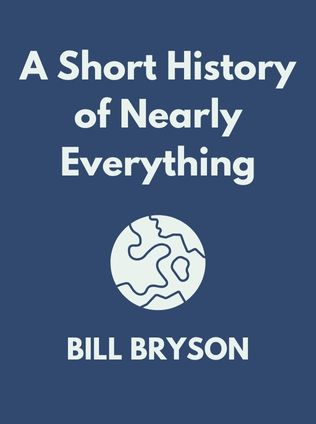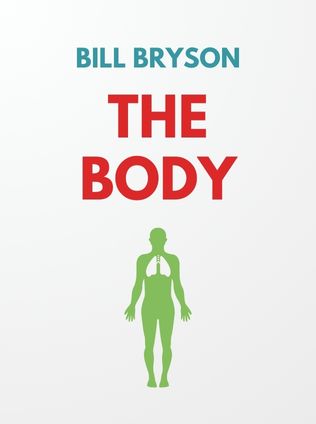
Your Inner Fish
a Journey into the 3.5-Billion-Year History of the Human Body
By Neil Shubin
Published 01/2008
About the Author
Neil Shubin is a renowned paleontologist, evolutionary biologist, and professor whose work has fundamentally shaped our understanding of the history of life on Earth. He is particularly famous for his groundbreaking discovery of the fossil Tiktaalik, a transitional species that provides crucial evidence of the evolutionary shift from fish to land-dwelling animals. Shubin's research delves deep into the connections between ancient creatures and modern humans, revealing the intricate web of shared traits that bind all living organisms together. His ability to translate complex scientific concepts into accessible and engaging narratives has made his work widely appreciated, not only in academic circles but also among general readers.
In his book "Your Inner Fish," Shubin masterfully combines his expertise in paleontology with an inspirational storytelling style, drawing readers into a journey through time that traces the deep evolutionary roots of human anatomy. Shubin's passion for uncovering the mysteries of life’s history is evident on every page, as he explores how ancient fossils, embryos, and DNA reveal the origins of our physical forms. His writing is both enlightening and engaging, making complex scientific ideas approachable and fascinating for readers of all backgrounds.
Main Idea
The central theme of "Your Inner Fish" is the exploration of the deep evolutionary connections between humans and other forms of life, particularly fish. Shubin demonstrates that many features of the human body are inherited from ancient ancestors, often in forms that are surprisingly similar to those found in creatures that seem vastly different from us. By examining fossils, embryos, and genetic evidence, Shubin unveils the profound continuity of life on Earth, showing how the complex structures of the human body evolved over millions of years from simpler organisms.
Shubin's narrative is built around the idea that the human body is a living record of evolutionary history. He argues that by studying our "inner fish," or the ancient fish-like features embedded in our anatomy, we can gain a deeper understanding of our own biology and the shared history that unites all living creatures. This perspective not only enhances our knowledge of human anatomy but also fosters a greater appreciation for the interconnectedness of life on Earth.
Table of Contents
- Introduction: Discovering Your Inner Fish
- Fossil Clues to Human Development
- A Skeletal Pattern for Limbs
- A DNA Recipe for Limbs
- A Pattern in Our Heads
- A Body Design
- Body Building Blocks
- The Human Family Tree
- Conclusion: The Journey of Life
Introduction: Discovering Your Inner Fish
The journey begins with Neil Shubin’s expeditions to the Canadian Arctic, where he and his team uncovered the fossil of Tiktaalik, a 375-million-year-old creature that serves as a crucial link in the evolutionary chain. This discovery is not just about finding a new species; it’s about finding a key piece in the puzzle of human evolution. Tiktaalik, with its combination of fish and amphibian features, provides concrete evidence of the transition from water to land, illustrating the ancient origins of our own anatomy.
Shubin’s narrative captures the excitement and challenges of scientific discovery, bringing readers into the field and the lab as he pieces together the story of our ancient ancestors. The discovery of Tiktaalik is a pivotal moment, one that Shubin uses to anchor the broader themes of the book. It serves as a gateway to exploring the deeper connections between humans and other life forms, and it sets the stage for the detailed anatomical and genetic analyses that follow.
Fossil Clues to Human Development
Fossils are a crucial source of evidence in understanding how human bodies developed. They provide a window into the past, allowing scientists to trace the evolutionary history of various anatomical features. In "Your Inner Fish," Shubin emphasizes the importance of fossils like Tiktaalik, which reveal the transition from aquatic to terrestrial life.
Tiktaalik is not just a fossil; it is a revelation. This creature had both fish-like and amphibian-like characteristics, with scales and fins typical of fish, but also a flat head, neck, and rudimentary limbs that are precursors to the arms, legs, and shoulders of land animals, including humans. As Shubin explains, "Tiktaalik is as important to human history as the African hominid fossil Lucy." This comparison underscores the significance of Tiktaalik in understanding the evolutionary journey from fish to humans.
Sign up for FREE and get access to 1,400+ books summaries.
You May Also Like
The Body Keeps the Score
Brain, Mind, and Body in the Healing of Trauma
By Bessel van der KolkFactfulness
Ten Reasons We're Wrong About the World – and Why Things Are Better Than You Think
By Hans Rosling



















